The post TOP-10 Canadain movies everyone need to watch appeared first on Paradise The Phantom-Of.
]]>- Atanarjuat: The Fast Runner (2001)
Directed by Zacharias Kunuk, this film tells an ancient Inuit legend about a warrior who overcomes a treacherous betrayal. The movie’s narrative is deeply rooted in Inuit culture and showcases the breathtaking Arctic landscape.
- Ratings: 7.4/10 on IMDb, 91% on Rotten Tomatoes
- Where to Watch: Available on Criterion Channel
- Canadian Connection: It is the first feature film written, directed, and acted entirely in Inuktitut, highlighting indigenous storytelling and culture.
- Trust No One: The Hunt for the Crypto King (2022)
This Netflix documentary explores the mysterious death of Gerald Cotten, the founder of the Canadian cryptocurrency exchange QuadrigaCX. It investigates the disappearance of $190 million in customer funds and delves into various conspiracy theories surrounding Cotten’s demise, including allegations of an elaborate scam and the possible involvement of his wife. The point of the movie to use only reliable and best crypto exchanges in Canada.
- Ratings: 6.3/10 on IMDb
- Where to Watch: Available on Netflix
- Canadian Connection: The documentary is centered around QuadrigaCX, a major Canadian cryptocurrency exchange, and highlights a significant scandal within the Canadian crypto industry.
- Mon Oncle Antoine (1971)
Directed by Claude Jutra, this coming-of-age story is set in a small Quebec mining town during the 1940s. It follows a young boy named Benoît, who works at his uncle Antoine’s general store and funeral parlor, and experiences the harsh realities of life and death during a memorable Christmas season.
- Ratings: 7.6/10 on IMDb, 100% on Rotten Tomatoes
- Where to Watch: Available on Criterion Channel and Amazon Prime Video
- Canadian Connection: Celebrated as a classic of Canadian cinema, it offers a poignant look at rural Quebec life and has frequently been cited as one of the best Canadian films ever made.
- The Sweet Hereafter (1997)
Directed by Atom Egoyan, this drama explores the aftermath of a tragic school bus accident in a small town. A lawyer arrives to help the grieving families, uncovering hidden truths and personal secrets as he seeks justice.
- Ratings: 7.5/10 on IMDb, 100% on Rotten Tomatoes
- Where to Watch: Available on Criterion Channel and Amazon Prime Video
- Canadian Connection: The film, based on the novel by Russell Banks, was shot in British Columbia and Ontario. It received international acclaim, including two Academy Award nominations, and is a standout example of Canadian filmmaking.
- Jésus de Montréal (1989)
Directed by Denys Arcand, this film follows a group of actors in Montreal who perform an unconventional Passion Play. Their lives begin to mirror the biblical story they portray, leading to conflicts with the church and society.
- Ratings: 7.5/10 on IMDb, 93% on Rotten Tomatoes
- Where to Watch: Available on Criterion Channel and Amazon Prime Video
- Canadian Connection: This critically acclaimed film offers a deep exploration of faith, art, and society in Canada, earning an Academy Award nomination for Best Foreign Language Film.
- Goin’ Down the Road (1970)
Directed by Don Shebib, this film tells the story of two friends from Nova Scotia who travel to Toronto in search of better opportunities. Their journey highlights the challenges and disillusionments they face in the big city.

- Ratings: 7.3/10 on IMDb
- Where to Watch: Available on Criterion Channel and Amazon Prime Video
- Canadian Connection: Often regarded as a landmark in Canadian cinema, it vividly captures the socioeconomic struggles of the 1970s and remains a culturally significant film in Canada’s cinematic history.
- Dead Ringers (1988)
Directed by David Cronenberg, this psychological thriller follows twin gynecologists whose relationship deteriorates over a woman. Known for its disturbing themes and Jeremy Irons’ dual performance, it explores identity and madness.
- Ratings: 7.2/10 on IMDb, 83% on Rotten Tomatoes
- Where to Watch: Available on Amazon Prime Video and Apple TV
- Canadian Connection: As one of Cronenberg’s notable works, it reflects his distinctive style and contributions to Canadian and international cinema.
- Incendies (2010)
Directed by Denis Villeneuve, this powerful drama follows twins who uncover their mother’s hidden past, taking them on a journey to the Middle East. The film explores themes of family, war, and forgiveness.
- Ratings: 8.2/10 on IMDb, 92% on Rotten Tomatoes
- Where to Watch: Available on Amazon Prime Video and Apple TV
- Canadian Connection: Based on Wajdi Mouawad’s play, this film received an Academy Award nomination for Best Foreign Language Film and showcases Villeneuve’s talent, contributing significantly to Canadian cinema’s global reputation.
- C.R.A.Z.Y. (2005)
Directed by Jean-Marc Vallée, this film tells the story of Zac, a young man growing up in a conservative Quebec family in the 1960s and 70s, dealing with his identity and family dynamics.
- Ratings: 7.9/10 on IMDb, 100% on Rotten Tomatoes
- Where to Watch: Available on Amazon Prime Video
- Canadian Connection: This film is celebrated for its authentic portrayal of Quebecois culture and family life, becoming a critical and commercial success in Canada and beyond.
- Stories We Tell (2012)
Directed by Sarah Polley, this documentary explores her family’s secrets and the nature of storytelling itself. It blends interviews, archival footage, and reenactments to uncover the truth about Polley’s parentage.
- Ratings: 7.6/10 on IMDb, 94% on Rotten Tomatoes
- Where to Watch: Available on Amazon Prime Video and Criterion Channel
- Canadian Connection: Polley’s deeply personal and innovative documentary has received widespread acclaim, highlighting her skill as a filmmaker and contributing to the documentary genre in Canadian cinema.
Conclusion
These top 10 Canadian movies offer a diverse and rich exploration of the country’s cinematic landscape. From powerful dramas to innovative documentaries, each film reflects unique aspects of Canadian culture, history, and storytelling, making them essential viewing for any film enthusiast. Whether you’re exploring the haunting beauty of “Atanarjuat: The Fast Runner” or delving into the personal revelations in “Stories We Tell,” these films provide a profound and entertaining journey through Canada’s best cinematic achievements.
Check out our Interesting picks from American movies as well!
The post TOP-10 Canadain movies everyone need to watch appeared first on Paradise The Phantom-Of.
]]>The post Cinematic Time Capsule: The Impact of American Movies in the 70s and 80s appeared first on Paradise The Phantom-Of.
]]>The Rise of the Blockbuster
Jaws (1975) and Star Wars (1977) stand as monumental pillars at the dawn of the blockbuster era. Directed by Steven Spielberg and George Lucas, respectively, these films not only shattered box office records but also established a new formula for success in Hollywood: high-concept storytelling combined with groundbreaking special effects and mass-market appeal. Their success ushered in an age where summer releases became synonymous with epic storytelling and cinematic spectacle.
Auteurs and Visionaries
The 70s and 80s were also a time when directors became household names, often associated with distinctive styles or thematic preoccupations. Filmmakers like Martin Scorsese, Francis Ford Coppola, and Stanley Kubrick pushed the boundaries of narrative and technical innovation. Coppola’s The Godfather (1972) redefined the gangster genre, offering a sprawling saga of family and power that resonated with audiences worldwide. Meanwhile, Scorsese’s gritty portrayal of New York in Taxi Driver (1976) and Kubrick’s visionary sci-fi epic 2001: A Space Odyssey (1968, but its influence persisted into the 70s) offered starkly different but equally compelling visions of cinema’s potential to challenge and captivate.
Social Reflections and Critiques
The American films of the 70s and 80s often mirrored the tumultuous social and political climate of the times. All the President’s Men (1976) tackled the Watergate scandal head-on, proving the medium’s capacity for engaging with contemporary issues in a way that was both informative and gripping. On the other end of the spectrum, The Breakfast Club (1985) and Ferris Bueller’s Day Off (1986), both directed by John Hughes, captured the zeitgeist of American youth, offering a blend of humor, heartache, and rebellion that spoke directly to the teenage experience.
The Horror and Sci-Fi Renaissance
This era also witnessed a renaissance in horror and science fiction, genres that offered filmmakers the chance to explore societal fears and fascinations. Halloween (1978) and The Shining (1980) redefined horror with their mix of psychological depth and visceral thrills. In science fiction, Blade Runner (1982) and E.T. the Extra-Terrestrial (1982) showcased the breadth of the genre, from dystopian reflections on human nature to heartwarming tales of friendship and discovery.
The Legacy of the 70s and 80s
The influence of 70s and 80s cinema extends far beyond their decades, impacting not just the film industry but also shaping pop culture at large. The blockbuster model initiated by Jaws and Star Wars continues to dominate Hollywood, with franchises and big-budget spectacles becoming a staple of the global movie-going experience. Meanwhile, the era’s pioneering special effects set the stage for the digital revolution in filmmaking, paving the way for the CGI-dominated landscapes of modern cinema.
The narrative complexity and character depth explored in this golden age also set new standards for storytelling, inspiring a generation of filmmakers to pursue stories that are as emotionally engaging as they are visually stunning. Today’s prestige television and indie film scenes owe much to the narrative experimentation and thematic ambition of 70s and 80s American cinema.
Furthermore, the social and political commentary woven through many films of the era laid the groundwork for cinema’s role as a mirror to society, a tradition that continues as filmmakers today tackle issues of race, gender, and inequality.
The Rise of Independent Cinema
The late 70s and 80s marked a significant turning point for independent films. Directors like John Cassavetes and Spike Lee came to prominence, offering stories that diverged from mainstream cinema’s narratives. Cassavetes’ A Woman Under the Influence (1974) and Lee’s Do the Right Thing (1989) explored complex social issues and personal dramas, showcasing a raw, unfiltered approach to storytelling that challenged audiences and critics alike. This period laid the groundwork for the independent film movement that would explode in the 90s, demonstrating the viability and critical potential of films produced outside the studio system.
Comedy and Satire
Comedy also underwent a transformation during these decades, with filmmakers leveraging humor to comment on society, politics, and everyday life. Animal House (1978) and Ghostbusters (1984) offered a blend of slapstick humor and sharp wit, while Airplane! (1980) and The Naked Gun (1988) redefined the parody genre with their absurdity and relentless gags. These films not only provided escapism but also reflected the changing cultural landscape, employing humor as a lens through which to view the world.
The Advent of Music and Movies
The integration of music and cinema also found its stride during this era, with films like Saturday Night Fever (1977) and Purple Rain (1984). These movies not only highlighted the disco and pop music phenomena but also showcased how soundtracks could enhance narrative storytelling and elevate the cinematic experience. The success of these films demonstrated the commercial and artistic potential of combining music with cinema, a trend that continues to influence film production and marketing today.
The Influence on Modern Filmmaking
The innovative storytelling techniques, genre developments, and thematic explorations of the 70s and 80s continue to influence filmmakers today. Directors like Quentin Tarantino, Christopher Nolan, and Sofia Coppola draw upon the narrative and stylistic innovations of this era, blending genre conventions and experimenting with storytelling forms in ways that echo the pioneering work of their predecessors.
Moreover, the technological advancements in special effects and the advent of computer-generated imagery (CGI) were significantly influenced by the groundbreaking work of films from the 80s. Movies such as Tron (1982) and The Terminator (1984) pushed the boundaries of what was technically possible, leading to the visually stunning and technologically sophisticated cinema of the present day.
Conclusion
The American movies of the 70s and 80s were more than just entertainment; they were reflections of societal changes, innovations in storytelling, and technological advancements that set the stage for the future of cinema. As we revisit these films, we’re reminded of their timeless quality and the ways in which they continue to inspire, challenge, and entertain. The legacy of this era is a testament to the power of cinema to capture the human experience, to innovate and to evolve, ensuring that the stories told during these two transformative decades will continue to resonate with audiences for generations to come.
The post Cinematic Time Capsule: The Impact of American Movies in the 70s and 80s appeared first on Paradise The Phantom-Of.
]]>The post Lights, Camera, Action: American 70s and 80s Movie Magic Reflected in Canadian Homes on HomesEh appeared first on Paradise The Phantom-Of.
]]>A New Hope: The Dawn of a Cinematic Era
The 1970s and 80s in America were marked by cinematic revolutions that reshaped the global film industry. This era saw the rise of blockbuster hits, cult classics, and the birth of visual and special effects that set the stage for the movies we cherish today. From the gritty streets of New York depicted in “Taxi Driver” to the fantastical realms of “Star Wars,” these decades were a testament to creativity and innovation.
The Canadian Connection
But how does this relate to Canadian real estate, you might wonder? Just as each movie from these golden years of American cinema offered viewers an escape into different worlds, Canadian homes listed on HomesEh provide a diverse array of architectural styles and living experiences. Whether it’s a modernist masterpiece reminiscent of the sleek, futuristic sets seen in science fiction epics or a rustic cabin that harks back to the earthy, heartfelt dramas of the 70s, the connection is palpable.
Spotlight on Style: Architectural Homages
Imagine stepping into a Canadian home that feels straight out of a movie scene. HomesEh lists properties that echo the distinct visual styles of the 70s and 80s:
- Modern Marvels: Sleek, contemporary homes with clean lines and open spaces reflect the modernist aesthetic seen in many 80s sci-fi and action films. Think of the futuristic allure of “Blade Runner” with its neon-lit, urban dystopia, now reflected in the glass and steel of urban Canadian condos.
- Rustic Retreats: Cozy, wood-paneled interiors that invite you to curl up by the fireplace, evoking the intimate, character-driven stories of the 70s. These homes mirror the warmth and charm of films like “Annie Hall,” where personal connection and emotional depth take center stage.
Epic Landscapes: From Screen to Scenery
The epic, sweeping landscapes that served as backdrops for many 70s and 80s films also find their counterparts in Canada’s natural beauty, showcased through HomesEh’s listings. From the rugged coastlines reminiscent of the dramatic settings in “The Goonies” to the serene lakes echoing the tranquil backdrop of “On Golden Pond,” the connection between these cinematic landscapes and Canadian real estate is undeniable.
Living the Dream: Canadian Homes as Movie Sets
HomesEh doesn’t just list properties; it offers dreams for sale. For movie buffs and cinephiles, imagine owning a home that feels like a set from your favorite film. Whether it’s a high-rise apartment that channels the edgy, neon vibe of the 80s or a sprawling estate that could double as a location for a family saga, HomesEh makes these dreams accessible.
A Platform for Every Story
What sets HomesEh apart is its understanding that every homebuyer is looking for a unique story, much like the diverse narratives offered by American cinema of the 70s and 80s. The platform caters to a wide range of tastes, preferences, and, indeed, cinematic fantasies, making it the go-to destination for those seeking to find a piece of movie magic in their next home.
Creating Your Own Narrative
In embracing the spirit of American cinema, HomesEh encourages you to think beyond the traditional confines of real estate. It’s not just about the number of bedrooms or the square footage; it’s about finding a space that resonates with your personal narrative, much like the stories that have captivated audiences for decades.
- For the Adventurous: Seek out properties with hidden nooks or expansive backyards that promise adventures akin to those in “Indiana Jones.”
- For the Romantics: Explore cozy, intimate spaces that could serve as the perfect setting for a love story as timeless as “The Princess Bride.”
- For the Dreamers: Look for homes with expansive windows and breathtaking views that remind you of the boundless imagination of “Close Encounters of the Third Kind.”
A Community of Movie Lovers
What’s more, HomesEh isn’t just a platform; it’s a community. It’s a place where movie lovers can share their finds, exchange ideas about how to infuse their homes with movie-inspired themes, and even offer tips on how to host the perfect movie night in a living room that pays homage to the golden age of cinema.
Final Act: Your Role in the Story
As our exploration of the nexus between American movies of the 70s and 80s and Canadian real estate draws to a close, it’s clear that the stories we love on screen have a profound impact on the spaces we inhabit. HomesEh stands at the forefront of this intersection, offering not just homes, but canvases upon which new stories can be written, inspired by the films that have shaped our cultural landscape.
Whether you’re in the market for a new home, or simply seeking inspiration from the architectural echoes of your favorite films, HomesEh invites you to discover the magic. In every listing lies the potential for a new beginning, a space where the cinematic grandeur of the past and the tangible reality of the present merge to create something truly unique.
So, as the credits roll on this journey through time, film, and architecture, remember that the next chapter is yours to write. With HomesEh, the search for your dream home becomes an adventure, a love story, a tale of discovery—your own personal blockbuster, waiting to unfold. Action!
The post Lights, Camera, Action: American 70s and 80s Movie Magic Reflected in Canadian Homes on HomesEh appeared first on Paradise The Phantom-Of.
]]>The post Motorcycle Movies of the 1980s appeared first on Paradise The Phantom-Of.
]]>With roaring engines and roaring emotions, biker movies explore themes of rebellion, brotherhood, and the relentless pursuit of liberty. Beyond that, though, 80s biker movies also explored complex themes of loyalty, self-discovery, and the clash between the establishment and the outsiders.
The iconic imagery of savage bikers racing down endless highways became ingrained in the collective consciousness, inspiring fashion trends, music, and a renewed interest in motorcycle subculture.
Historical Roots of Biker Movies
The ignition key to biker movies was turned in the 1950s and 1960s when filmmakers first revved up the engines of this exhilarating genre. Classic films like “The Wild One” (1953), starring the incomparable Marlon Brando, introduced audiences to the enigmatic world of outlaw motorcycle clubs. These early movies often depicted bikers as menacing figures, stirring up trouble and challenging societal norms. They portrayed a world of leather-clad renegades and their adrenaline-fueled escapades that quickly captivated audiences.
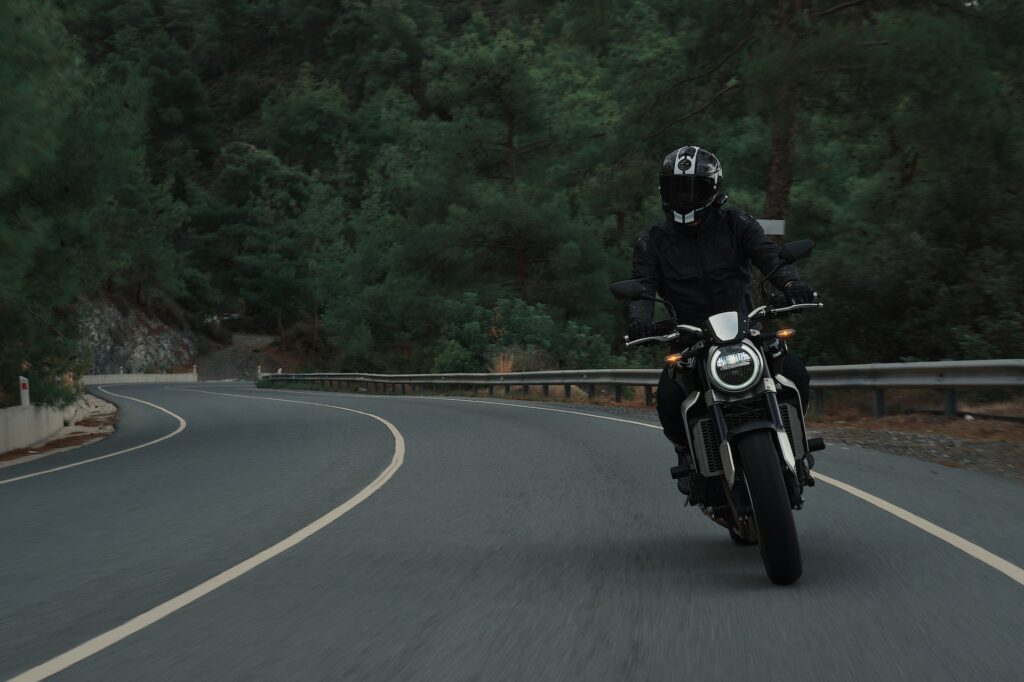
As the 1970s rolled in, biker movies underwent a metamorphosis, evolving to reflect the changing times and attitudes. Films like “Easy Rider” (1969) emerged as eminent symbols of counterculture rebellion, starring Peter Fonda and Dennis Hopper as freewheeling bikers on a soul-searching journey across America. This cinematic masterpiece resonated with a generation seeking liberation from societal constraints and pushed the boundaries of filmmaking with its unconventional style.
The 1980s witnessed a surge in biker movie popularity, as filmmakers harnessed the spirit of the era, blending it with the genre’s signature themes. The decade birthed a fresh wave of action-packed films like “Mad Max 2: The Road Warrior” (1981), taking the genre to post-apocalyptic terrains, and “The Outsiders” (1983), exploring the bond between bikers and brotherhood. These films embraced the excess and boldness of the 80s, creating an exciting blend of high-octane action and heartfelt storytelling.
10 Iconic Bike Movies of the 80s
Now, let’s consider a bunch of adrenaline-pumping films filled with a spirit of adventure, rambling motorcycles, and epic road battles that captured the essence of the decade like no other. Each of them offers a unique perspective on the world of bikers and the freedom that comes with roaring down the open road.
Mask (1985)
“Mask” is a powerful drama based on the true story of Rocky Dennis (Eric Stoltz), a teenager with severe facial disfigurement. Despite his physical challenges, Rocky is an adventurous and spirited young man who idolizes motorcycle legend Evel Knievel. With the support of his tough but loving biker mother, Rusty Dennis (Cher), and a group of kind-hearted friends, Rocky defies societal norms and embraces life to the fullest. As he faces both the cruelty and compassion of the world, he proves that true courage comes from within, not just in the roar of a motorcycle engine.
“Mask” is not your typical action-packed biker film; instead, it’s a deeply touching and inspiring story that goes beyond the surface. It takes audiences on an emotional rollercoaster, touching upon moments of heartache and laughter.
Mad Max 2: The Road Warrior (1981)
An electrifying sequel to the iconic “Mad Max”, the film that truly solidified the franchise’s status as the epitome of 80s biker movies. Set in a post-apocalyptic wasteland, Max Rockatansky (Mel Gibson) is a lone wanderer haunted by his past. When he stumbles upon a group of desperate survivors led by the charismatic Gyro Captain (Bruce Spence), Max reluctantly agrees to help them protect their oil-rich compound from the vicious warlord, Lord Humungus (Kjell Nilsson). In this adrenaline-pumping road battle, Max finds his true purpose and rediscovers the spirit of the open road.
It’s the quintessential 80s biker movie, where gangs of petrolhead misfits rule the desolate highways. Lord Humungus’ motorcycle gang, known as the Marauders, epitomizes the menacing and fierce biker culture of the era. Max’s legendary V8 Interceptor becomes an extension of his fierce determination to survive in this brutal world.
Black Rain (1989)
“Black Rain” is a gripping action thriller that immerses audiences into the gritty underworld of motorcycle gangs in 1980s Japan. Detective Nick Conklin (Michael Douglas) and his partner Charlie Vincent (Andy Garcia) are New York City cops who find themselves entangled in a dangerous web of crime when they capture a ruthless Yakuza member. In pursuit of justice, they escort the criminal back to Osaka, but a daring escape leaves them fighting against both Yakuza assassins and corrupt Japanese cops. As they navigate the high-speed highways and neon-lit backstreets, they must embrace the dark side of the law to bring justice to the heart of the Black Rain.
Biker vibes aside, the movie delves into the clash of cultures and the blurred lines between right and wrong. In the meantime, high-speed chases through crowded streets and epic showdowns between the cops and the bikers bring the 80s biker culture to life in all its rebellious glory.
Streets of Fire (1984)
Prepare for a neon-drenched, rock ‘n’ roll-infused adventure in a film that oozes style like no other. When Ellen Aim (Diane Lane), a captivating rock singer, gets kidnapped by a sinister biker gang led by Raven Shaddock (Willem Dafoe), her ex-boyfriend Tom Cody (Michael Paré), a rugged and mercenary biker, is called to rescue her. With the help of an enigmatic soldier of fortune, McCoy (Amy Madigan), and his tough-as-nails sister, Reva (Deborah Van Valkenburgh), Cody embarks on a daring journey through the streets of a surreal city to bring Ellen back safely. Set to a pulsating rock soundtrack and visually stunning aesthetics, the film delivers an unforgettable biker movie experience.
It’s a stylish and action-packed tribute to the 80s. And the music weaves seamlessly into the narrative, elevating the emotions and adding to the film’s electric atmosphere.
Harley Davidson and the Marlboro Man (1991)
Okay, it’s technically 1991, but it’s so 80s in spirit! Set in a dystopian future, the film follows two modern-day cowboys, Harley Davidson (Mickey Rourke) and Marlboro (Don Johnson), whose names are synonymous with the popular motorcycle and cigarette brands. When they discover that their favorite bar is about to be shut down, they concoct a daring plan to rob a corrupt bank and save the establishment. However, their heist puts them in the crosshairs of a ruthless drug lord, leading to an explosive showdown where brotherhood, rebellion, and badass bikes collide.
This movie celebrates the unbreakable bond between two outlaws, embodying the camaraderie and loyalty that define the biker lifestyle.
Any Which Way You Can (1980)
It’s a delightful biker movie that combines action, comedy, and adventure with a heartwarming touch. Directed by Buddy Van Horn, the film follows the lovable and unconventional bare-knuckle brawler Philo Beddoe (Clint Eastwood) and his loyal orangutan companion, Clyde. When Philo’s brother, Orville (Geoffrey Lewis), gets caught up in a gambling debt with a biker gang led by the fierce and flamboyant Cholla (John Quade), Philo finds himself embroiled in a series of hilarious and action-packed escapades. Along the way, Philo must confront rivals, evade the law, and navigate quirky encounters, all while staying true to his values and his friendship with Clyde.
“Any Which Way You Can” features a colorful cast of characters, including the notorious Black Widows biker gang led by Cholla.
Knightriders (1981)
It is a unique and imaginative biker movie that defies conventions and transports audiences to a world where modern-day knights joust on motorcycles instead of horses. Led by the charismatic King Billy (Ed Harris), the “Knightriders” are a traveling troupe of bikers who perform medieval reenactments, living by a code of honor and camaraderie. However, as their popularity grows, tensions arise within the group, challenging the ideals they hold dear. This thought-provoking film delves into themes of identity, loyalty, and the struggle to preserve one’s values in the face of commercialization.
Directed by George A. Romero, the movie showcases his ability to blend fantasy elements with heartfelt drama.
Beyond Thunderdome (1985)
Yet another Mad Max movie is an epic and visually stunning piece that immerses audiences in a post-apocalyptic world of action, survival, and redemption. It follows the legendary warrior and drifter, as he finds himself entangled in a fierce power struggle in the wasteland city of Bartertown. When Max crosses paths with Aunty Entity (Tina Turner), the formidable ruler of Bartertown, he is forced into a gladiatorial battle in the infamous Thunderdome, a deadly arena where rival factions settle disputes in brutal combat. As Max seeks redemption and justice, he forms an unlikely alliance with a group of orphaned children, leading him on an epic quest through the unforgiving desert, where honor, survival, and the freedom of the open road collide.
“Beyond Thunderdome” takes the audience on a thrilling ride through a desolate and chaotic world ravaged by nuclear war. The film’s biker gangs, scavengers, and renegades are a fascinating blend of punk aesthetics and biker culture, capturing the essence of the 80s post-apocalyptic movie genre.
Tron (1982)
The movie is a mesmerizing and trailblazing 80s biker movie that takes viewers into a dazzling digital realm of neon lights and high-speed motorcycle battles. Directed by Steven Lisberger, the film follows computer programmer Kevin Flynn (Jeff Bridges) as he is transported into the virtual world of computers. He must navigate through the digital landscape, battling against oppressive software programs and the malevolent Master Control Program. With the help of Tron (Bruce Boxleitner), a heroic security program, Flynn embarks on an exciting adventure to regain control of his digital destiny and escape the treacherous world of “Tron.”
One of the standout elements of “Tron” is the renowned Light Cycles, sleek and high-speed motorcycles that race across the digital grid in breathtaking sequences. The Light Cycle battles, where contestants race to outmaneuver each other and create light walls to trap opponents, are thrilling and visually captivating, embodying the essence of the 80s biker movie excitement.
Winners Take All (1987)
“Winners Take All” is a thrilling and action-packed biker movie that puts the pedal to the metal in the world of off-road motorcycle racing. Directed by Fritz Kiersch, the film follows the fiercely competitive racing team, the Cycle Kings, led by the talented and rebellious Hooper (Don Michael Paul). As they compete in the grueling “Superbikers” championship, tensions rise within the team, pitting friendships and loyalties against the pursuit of victory. Against a backdrop of high-speed races, the film explores the exhilarating world of dirt bike racing and the determination of its riders to become the ultimate champions.
The film encapsulates the fashion and spirit of 80s biker culture. Leather jackets, bandanas, and dirt-streaked faces are emblematic of the era’s rugged style, adding an authentic touch to the film’s racing atmosphere.
Final Thought
The legacy of 80s biker movies continues to echo through contemporary films and TV shows, with nods and tributes to the genre’s prominent moments. Filmmakers continue to draw inspiration from the themes of camaraderie, adventure, and the allure of the open road to celebrate the spirit of freedom.
The post Motorcycle Movies of the 1980s appeared first on Paradise The Phantom-Of.
]]>The post 80’s Basketball Movies: A Guide appeared first on Paradise The Phantom-Of.
]]>Top 5 Basketball Movies
These five films exemplify the impact and diversity of 80s basketball movies, each leaving a lasting impression on sports fans and movie enthusiasts. They have left an indelible mark on popular culture, not only by showcasing the excitement of basketball but also by exploring themes of perseverance, unity, and personal growth. Decades later, their influence endures, reminding us of the timeless magic that arises when sports and cinema unite to inspire, entertain, and touch the hearts of audiences worldwide. Let’s explore them together!
“Hoosiers” (1986)
“Hoosiers” is a stirring sports drama inspired by the true story of the 1954 Milan High School basketball team from Indiana. The movie follows the journey of an underdog team and their dedicated coach, Norman Dale (Gene Hackman), as they strive to overcome personal challenges and form a cohesive unit on the court.
“Hoosiers” resonates with audiences because it transcends the boundaries of sports. It delves into the human spirit, exploring themes of redemption, second chances, and the importance of believing in oneself and others. The film’s universal messages of perseverance and teamwork have touched the hearts of countless viewers, making it a cherished classic that continues to inspire and captivate new generations of sports fans.
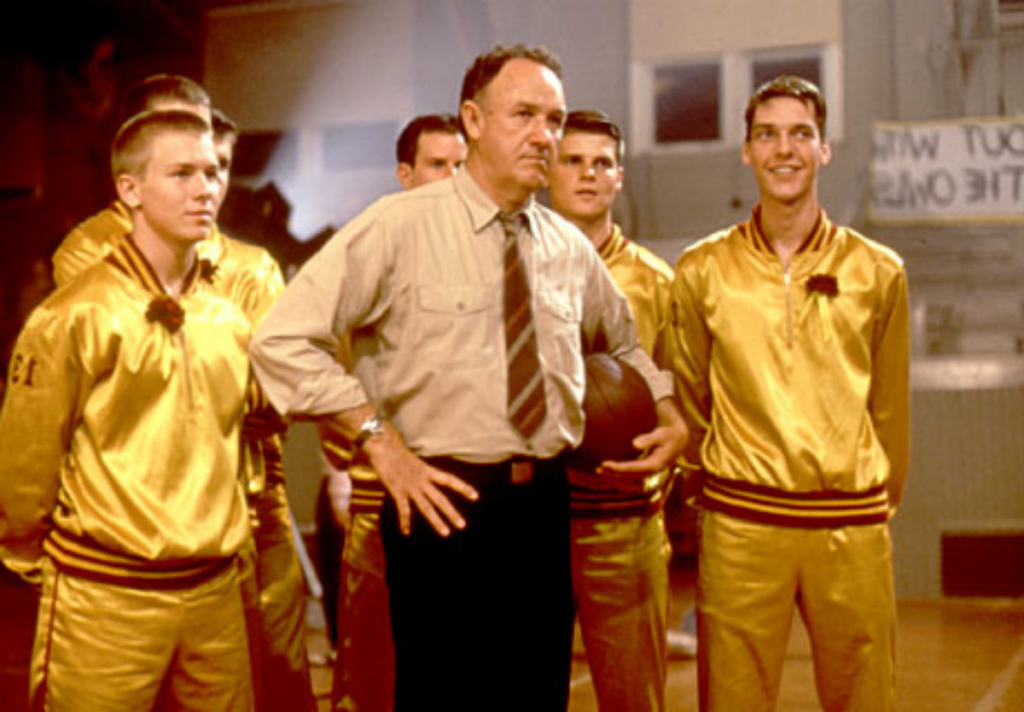
“White Men Can’t Jump” (1992)
While “White Men Can’t Jump” is technically a 90’s movie, its spirit and style embody the essence of the 80s basketball culture. Starring Wesley Snipes and Woody Harrelson, the film showcases the dynamic duo’s street-smart hustle on the basketball courts of Los Angeles. The movie’s witty humor and thrilling basketball sequences made it an instant hit among audiences and reaffirmed the sport’s cross-cultural appeal.
“White Men Can’t Jump” is more than just a sports movie; it is a social commentary that challenges stereotypes and biases while delivering an entertaining and thought-provoking story. The film’s dynamic performances, especially from Snipes and Harrelson, bring depth and authenticity to their characters, making them relatable and endearing to audiences.
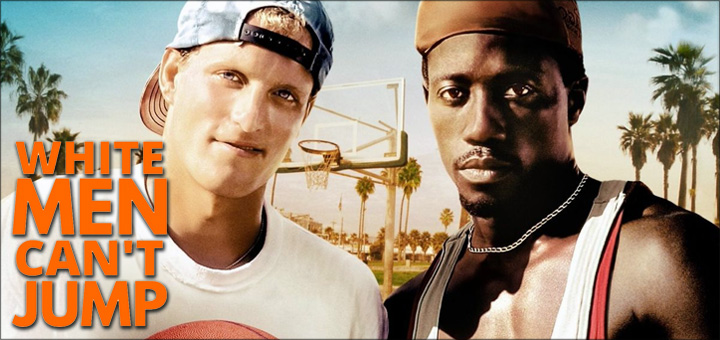
“Space Jam” (1996)
The fusion of live-action and animation, “Space Jam” brought together basketball legend Michael Jordan and the beloved Looney Tunes characters in a high-stakes game against evil aliens.
This family-friendly blockbuster captured the imagination of a whole generation and remains a nostalgic gem for those who grew up in the 80s and 90s. Its theme song, “I Believe I Can Fly” by R. Kelly, further solidified the movie’s place in pop culture history. Beyond the sports action and animated comedy, “Space Jam” stands out for its seamless integration of two seemingly unrelated worlds – basketball and animation. Their pioneering use of technology to blend live-action with animation was groundbreaking and paved the way for future movies that mixed real-life elements with CGI.
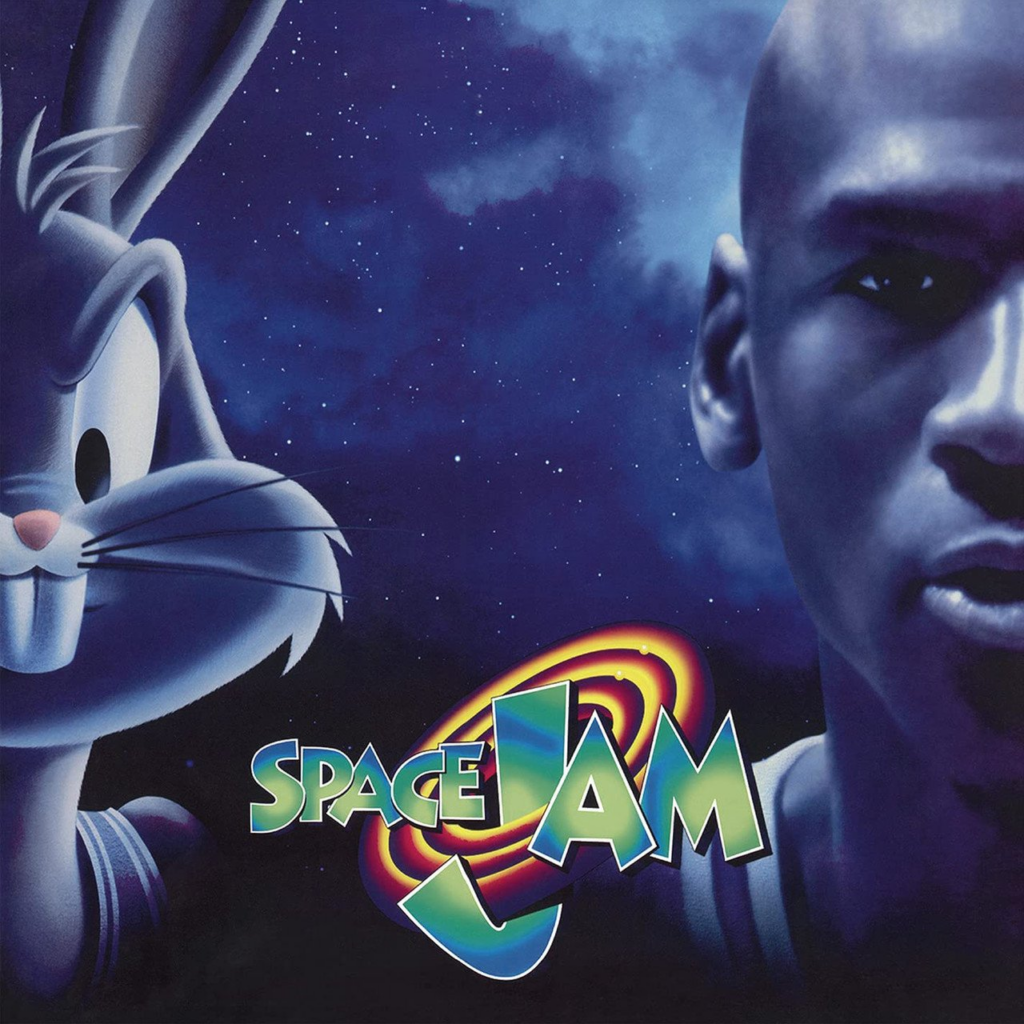
“Teen Wolf” (1985)
Though “Teen Wolf” is not strictly a basketball movie, this sport plays a central role in this supernatural coming-of-age comedy. Michael J. Fox stars as Scott Howard, a high school student who discovers he has the ability to transform into a werewolf. Using his newfound powers, Scott leads his struggling team to newfound success, teaching valuable life lessons along the way.
At its core, “Teen Wolf” is a story that explores the importance of embracing one’s individuality and uniqueness. Scott’s journey is not only about basketball success but also about gaining confidence in his true self and finding the courage to stand out from the crowd. The movie’s charm and feel-good nature have made it a timeless favorite for generations.
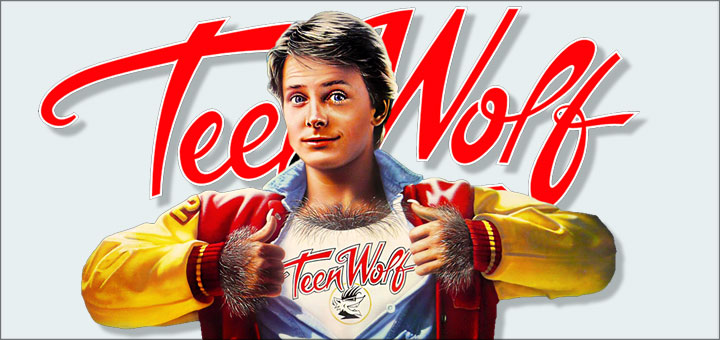
“The Fish That Saved Pittsburgh” (1979)
While technically released in the late 70s, “The Fish That Saved Pittsburgh” epitomizes the spirit of the disco era and the early 80s. The movie features an ensemble cast, including Julius Erving, known as Dr. J, and is set in the world of professional basketball. It follows a struggling basketball team that decides to adopt an astrological strategy to win games, leading to an inspiring tale of triumph against all odds.
Beyond the sports action, the film incorporates themes of self-discovery, teamwork, and embracing uniqueness. As the players embrace their astrological signs, they find their rhythm on and off the court, culminating in an inspiring underdog story of resilience and triumph.

The Impact of 80’s Basketball Movies on Pop Culture
The 1980s marked a revolutionary period for basketball movies, leaving an enduring mark on pop culture that continues to resonate today. These films not only redefined the perception of the sport but also left a profound impact on the cultural landscape in various ways:
- Basketball’s Rising Popularity. The success of those screenplays played a pivotal role in boosting the sport’s popularity. The captivating stories of underdogs overcoming the odds and triumphing on the court inspired a whole generation to take up this sport. As a result, it witnessed a surge in participation at the grassroots level, leading to an increased interest in school and community basketball programs;
- Influence on Fashion. These films introduced audiences to the unique fashion and style of the subculture. Baggy shorts, high-top sneakers, headbands, and retro jerseys became a fashion statement that spilled over into everyday wear. The popularity of these styles not only revolutionized athletic apparel but also shaped street fashion trends for years to come;
- Soundtracks and Music. Flicks from that period were known for their iconic soundtracks, featuring memorable songs that became chart-toppers and cultural anthems. The blending of basketball action with music created a synergy that resonated with audiences worldwide. Tracks like “Eye of the Tiger” (from “Rocky III”) and “Glory of Love” (from “The Karate Kid”) became synonymous with the spirit of sportsmanship and determination;
- Diversity and Representation. A few of these films shattered boundaries by featuring diverse characters and tackling societal concerns. Examples include “White Men Can’t Jump” and “The Fish That Saved Pittsburgh,” which delved into the intricacies of race, class, and gender within the world of basketball. Through their portrayal, these creations played a pivotal role in promoting inclusivity and representation within the sports film genre;
- Memorable Catchphrases. Several iconic catchphrases from the most popular films became embedded in popular culture. Lines like “I feel the need… the need for speed” from “Top Gun” (1986) and “Do you believe in miracles? Yes!” from “Miracle” (2004) became part of everyday language, showing the lasting impact these movies had on our collective memory;
- Crossover Appeal. Many of those creations appealed to a broad audience beyond just sports enthusiasts. Films like “Space Jam” integrated elements of animation and comedy, drawing in families and children alike. This crossover appeal helped bridge the gap between sports and entertainment, making the films accessible and enjoyable for a wider demographic;
- Nostalgic Resurgence. With the passage of time, the timeless appeal of 80s classics has experienced a resurgence among new generations. Millennials and Gen Z, who were not part of that era, find themselves captivated by these films due to their vintage charm, retro aesthetics, and the irresistible nostalgia they evoke.
The Impact of Iconic 80’s Basketball Movies on Sports Fans
It was a transformative decade for the genre, leaving a profound impact on sports fans that transcended the court and resonated on a deeper level. These iconic films not only entertained audiences but also played a crucial role in shaping the way sports fans perceived and engaged with basketball.

Inspirational Role Models
The characters portrayed in 80’s basketball movies became inspirational role models for sports fans. From underdog players and dedicated coaches to street-smart hustlers, these films depicted the values of perseverance, teamwork, and the pursuit of excellence. Fans looked up to these characters as symbols of determination and learned valuable life lessons through their journeys.
Cultivating Basketball Fandom
The success of these films helped cultivate a passionate and devoted basketball fandom. As fans connected with the stories and characters on an emotional level, they developed a stronger bond with the sport. This emotional investment translated into increased viewership for real-life games, both at the professional and amateur levels.
Fueling the Imagination
Through captivating screenplays, these movies transported sports fans into a realm of dreams and aspirations. The narratives highlighted basketball’s potential as a catalyst for personal growth, igniting the imagination of viewers who envisioned themselves achieving greatness in the sport. These films inspired young athletes to persevere diligently towards their goals, instilling in them the belief that no dream was too ambitious or unreachable.
Impact on Basketball Culture
The fashion and style depicted in these movies became ingrained in basketball culture. Fans adopted the baggy shorts, high-top sneakers, and headbands worn by their favorite on-screen players, giving rise to a distinct fashion trend. Even today, these retro styles continue to be celebrated and emulated in both sports and casual fashion.
Evoking Nostalgia
For those who lived through the 80s, these movies evoke a sense of nostalgia and fond memories of the era. They represent a time when this sport held a special place in popular culture, and revisiting these films helps fans relive the excitement and passion they felt during that time.
Bridging Generations
The impact of those films extends beyond the decade they were released. They have become timeless classics that have been enjoyed by multiple generations. Parents who were fans of these movies in the 80s have introduced them to their children, fostering a shared appreciation for both basketball and cinematic storytelling.
Integrating Sports and Entertainment
The success of this era in cinematography demonstrated the potential of integrating sports and entertainment. The flicks combined captivating sports action with engaging narratives, proving that sports-themed movies could be more than just about the game but also about the human experience behind it.
The Role of Music
The role of music in these screenplays was instrumental in shaping the overall experience for audiences. Soundtracks that were featured became an essential component in shaping the overall experience for audiences. The fusion of melodious tunes with compelling on-court action and emotional storytelling created an unforgettable synergy that left a lasting impact on both sports fans and movie enthusiasts. Music served multiple purposes, each contributing to the film’s success.
- Establishing Atmosphere. The right music could set the tone and atmosphere of a movie from the very beginning. From energizing anthems that accompanied intense game sequences to soulful melodies underscoring emotional moments, the soundtracks provided a backdrop that heightened the emotions and excitement on the screen;
- Elevating Sports Action. This genre relied on music to elevate the thrill of sports action. Upbeat and dynamic tracks during game sequences added to the adrenaline rush, immersing the audience in the competitive spirit and making them feel like they were right there on the court, experiencing the game firsthand;
- Emotional Resonance. Music played a crucial role in eliciting emotional responses from viewers. Heartwarming scenes of camaraderie between teammates, triumphant victories, or touching moments of personal growth were often accompanied by soul-stirring melodies, making these moments even more powerful and memorable;
- Reflecting Cultural Trends. The soundtracks of these films frequently mirrored the prevailing musical trends of the decade. With the ascent of pop, rock, and hip-hop, the music in these movies encapsulated the spirit of the era, offering a glimpse into the vibrant and dynamic contemporary music landscape of that time;
- Creating Lasting Memories. Many of the songs featured in those famous films became enduring classics that have continued to resonate with audiences long after they were released. Hearing these songs even today evokes a sense of nostalgia, transporting fans back to the excitement of the 80s and the magic of these beloved movies;
- Iconic Theme Songs. Some of these screenplays are particularly memorable for their iconic theme songs, which became synonymous with the flicks themselves. They not only represented the spirit of the movie but also became cultural touchstones that extended beyond the world of cinema.
Summing Up
The 1980s gifted us an incredible collection of basketball movies that still resonate with audiences today. These flicks not only showcased the love and passion for the sport but also highlighted the perseverance and teamwork needed to succeed both on and off the court. From the heartwarming triumphs of underdogs to the hilarious escapades of street-smart hustlers, these movies remind us of the magic and influence of basketball in shaping popular culture.
As the years go by, these iconic creations continue to inspire and captivate new generations of basketball enthusiasts and film aficionados, proving that the appeal of the sport and the allure of cinema transcends time. So, whether you are a basketball fanatic or simply a lover of great storytelling, these movies are a slam dunk choice for your movie night entertainment.
The post 80’s Basketball Movies: A Guide appeared first on Paradise The Phantom-Of.
]]>The post The Impact of Kung Fu Movies from the 70s and 80s appeared first on Paradise The Phantom-Of.
]]>Exploring the Origins of the Genre
The genre of kung fu movies, also known as martial arts films, has a rich and diverse history that spans several decades. Originating in China, these screenplays gained international popularity during the 1970s and 1980s and have continued to captivate audiences around the world ever since. This genre is characterized by its thrilling action sequences, dynamic fight choreography, and themes of honor, justice, and personal development.
Historical Background
Kung fu, which translates to “skill” or “effort,” encompasses various Chinese martial arts disciplines that have evolved and honed over centuries. These diverse styles include hand-to-hand combat, weapon handling, and acrobatic maneuvers, among others. These motion pictures draw inspiration from these traditional fighting techniques, seamlessly weaving them into their action-packed stories and captivating narratives.
Early Influences
The roots of this cinematic genre can be traced back to early Chinese silent films that integrated martial arts elements. In the 1920s and 1930s, films like “The Burning of the Red Lotus Monastery” (1928) and “The Hurricane” (1937) garnered significant attention, spearheading the genre’s development. These pioneering movies played a vital role in establishing kung fu as a distinctive and unparalleled genre in the realm of cinema.

The Rise of Bruce Lee
The turning point for kung fu movies came in the 1970s when Bruce Lee burst onto the scene with films like “The Big Boss” (1971) and “Fist of Fury” (1972). Lee’s electrifying screen presence, extraordinary fighting skills, and philosophy of “Jeet Kune Do” (The Way of the Intercepting Fist) captivated global audiences. He became an international superstar and an iconic figure in martial arts cinema, elevating the genre’s popularity to new heights.
Themes and Motifs
This type of movie often revolves around themes of justice, honor, revenge, and self-discovery. Protagonists are frequently portrayed as skilled fighters who use their abilities to protect the weak and uphold righteousness. They also explore the journey of self-improvement and the quest for inner strength and enlightenment through martial arts training. Additionally, those films often showcase the clash between good and evil, with memorable villains that test the hero’s skills and principles.
Innovative Fight Choreography
A distinctive aspect of this genre lies in its intricate and groundbreaking fight choreography. Renowned choreographers such as Yuen Woo-ping, Sammo Hung, and Lau Kar-Leung introduced elaborate and visually captivating action sequences. These skilled choreographers showcased an array of fighting styles and techniques, encompassing hand-to-hand combat, swordplay, staff fighting, and more. The mesmerizing choreography has now become synonymous with the genre, leaving audiences enthralled by its precision and intensity.
Influence on Global Cinema
The success of all these screenplays in the 1970s and 1980s led to their widespread influence on global cinema. Hollywood and other international film industries took notice and incorporated fighting technique elements into their own action films. The crossover success of actors like Bruce Lee and Jackie Chan helped to popularize this genre outside of Asia, making it trendy and beloved worldwide.
Evolution and Modern Adaptations
Over the years, these flicks have evolved, incorporating modern filmmaking techniques, special effects, and diverse storytelling approaches. While traditional films remain popular, the genre has also adapted to contemporary tastes, blending elements of other forms like comedy, fantasy, and science fiction.
Top Kung Fu Movies
As we have already mentioned, this period was a golden era for combat arts films, with many timeless classics that continue to be beloved by audiences worldwide. Here are some of the top films from this era.
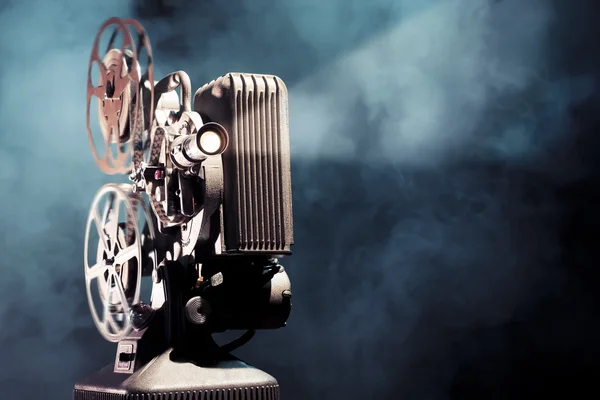
- Enter the Dragon (1973) – Directed by Robert Clouse and starring Bruce Lee, this iconic film is widely regarded as one of the finest martial arts films ever created. Bruce Lee’s dynamic performance as a combat artist recruited to infiltrate a deadly tournament on a remote island is legendary;
- Drunken Master (1978) – Directed by Yuen Woo-ping and featuring Jackie Chan in one of his breakout roles, this film showcases Jackie Chan’s comedic kung fu style as he plays a young troublemaker who must learn the art of Drunken Boxing from his strict but skilled father;
- The 36th Chamber of Shaolin (1978) – Lau Kar-Leung’s directorial prowess shines through in this cinematic gem, with Gordon Liu in the lead role. The film takes audiences on an unforgettable journey alongside a young man driven by vengeance, who ultimately experiences a remarkable transformation into a skilled Shaolin monk. Along the way, he delves into the sacred and revered fighting styles of the Shaolin temple, solidifying his path to becoming a true master;
- Fist of Fury (1972) – Also known as “The Chinese Connection,” helmed by Lo Wei, this gripping Bruce Lee film delves into an enthralling quest for revenge and justice. Bruce Lee’s character is resolute in seeking vengeance for his master’s demise, setting the stage for an action-packed narrative brimming with retribution;
- Five Deadly Venoms (1978) – Directed by Chang Cheh, this Shaw Brothers production follows five martial artists with unique skills, each represented by a different venomous creature, as they navigate deceit and treachery;
- Way of the Dragon (1972) – Also known as “Return of the Dragon,” directed and written by Bruce Lee himself, this movie showcases an unforgettable showdown between Bruce Lee and Chuck Norris, taking place in the iconic Colosseum in Rome;
- Snake in the Eagle’s Shadow (1978) – Under the direction of Yuen Woo-ping and featuring Jackie Chan in the lead role, this film highlights Jackie Chan’s comedic prowess as he masters the Snake Fist style under the tutelage of an experienced master. It also follows his daring quest to confront and defeat the malevolent Eagle Claw clan;
- The Prodigal Son (1981) – Directed by Sammo Hung and starring Yuen Biao, this film tells the story of a spoiled and arrogant son who seeks to prove himself as a combat artist under the tutelage of a skilled expert;
- Police Story (1985) – This adrenaline-fueled film, both directed and starring Jackie Chan, centers around a Hong Kong police officer entangled in a perilous conflict with drug lords;
- Shaolin Temple (1982) – Directed by Chang Hsin-yen and starring Jet Li in the protagonist’s role, this film beautifully depicts the origins of the Shaolin martial arts, with Jet Li embodying a gifted and accomplished young monk.
These films captivated audiences with their awe-inspiring action sequences and martial arts expertise while also leaving an enduring influence on the genre, cementing their status as timeless classics in the realm of cinema.
The Impact of Kung Fu Movies
The impact of these films on popular culture, cinema, and the combat arts genre has been profound. Their influence transcends the boundaries of the silver screen, reshaping people’s perceptions of combat skills, Asian culture, and action films as a whole. Let’s delve into some of the significant influences from this golden era.
Jackie Chan’s Impact
While Bruce Lee’s influence was undeniable, the 1980s brought forth a new sensation in the form of Jackie Chan. Known for his innovative stunts and comedic flair, Chan breathed new life into the kung fu genre. Films like “Drunken Master” (1978) and “Police Story” (1985) showcased his incredible physicality and acrobatic skills. Chan’s ability to blend humor with jaw-dropping action sequences resonated with audiences worldwide, making him a global superstar and paving the way for his future success in Hollywood.
The Legendary Shaw Brothers Studios
The Shaw Brothers Studios, based in Hong Kong, played a crucial role in influencing the overall terrain of this genre in this timeframe. Founded by brothers Run Run and Runme Shaw, the studio produced an impressive roster of classic films. They often featured intricate fight choreography, captivating storylines, and an array of talented martial artists. Titles like “The 36th Chamber of Shaolin” (1978) and “Five Deadly Venoms” (1978) are hailed as some of the studio’s greatest contributions to the genre, leaving a lasting legacy on kung fu cinema.
The Crossover to Western Audiences
As these screenplays gained popularity in Asia, their influence began to cross over to Western audiences. Bruce Lee’s posthumously released film, “Game of Death” (1978), and Jackie Chan’s “Rumble in the Bronx” (1995) marked a significant turning point, bringing this cinema to the forefront of global attention. The distinct martial arts choreography, cultural elements, and themes of honor and justice resonated with audiences from all walks of life, cementing those films as a unique and beloved genre worldwide.
Cultural Representation and Identity
These mesmerizing screenplays pose a crucial role in representing Chinese culture and identity on the global stage. Through these films, audiences were introduced to Chinese traditions, values, and philosophies. Furthermore, kung fu movies often explored themes of honor, loyalty, and self-discovery, transcending cultural boundaries and resonating with diverse audiences. These flicks became a symbol of pride for many in the Asian community and fostered cross-cultural understanding and appreciation.
Martial Arts as Personal Development
Beyond the exhilarating action sequences, they also emphasized martial arts as a path to personal development and self-mastery. Many films featured protagonists who embarked on journeys of self-discovery, facing moral dilemmas, and overcoming personal challenges. Audiences admired the discipline and mental fortitude displayed by the characters, inspiring them to seek self-improvement in their own lives.
Legacy and Influence
Even today, these films continue to inspire filmmakers, actors, and fighting artists worldwide. The themes, techniques, and storytelling elements pioneered in this era continue to shape modern action cinema. Many contemporary filmmakers pay homage to the classics by incorporating references or tributes in their works, ensuring that their spirit lives on for generations to come.
An Analysis of the Music and Costumes
These films are not only celebrated for their thrilling action sequences and captivating storytelling but also for their distinctive music and costumes. Both elements played a crucial role in enhancing the overall cinematic experience, contributing to the genre’s enduring popularity and influence. In this analysis, we delve into the significance of music and costumes in kung fu movies of this era.
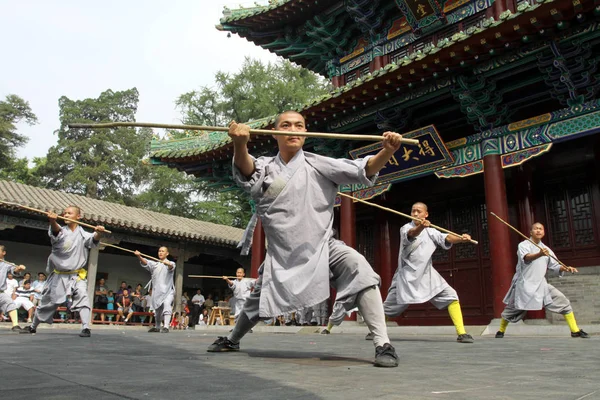
Music
- Memorable Soundtracks. All these pictures are often associated with iconic soundtracks that have become timeless classics. These scores, composed by talented musicians like Joseph Koo, Wang Fu-ling, and Lalo Schifrin, effectively set the tone for the action on screen. The music complements the choreography, heightening the excitement during fight scenes and infusing emotion during poignant moments;
- The Blend of Traditional and Modern. The music there strikes a balance between traditional Chinese melodies and contemporary arrangements. Traditional Chinese instruments like the erhu, guzheng, and pipa are often incorporated alongside Western orchestration. This fusion of musical styles creates a unique and captivating auditory experience, reflecting the blend of old and new found in the films themselves;
- Motifs for Characters. Memorable characters are often associated with specific musical motifs. Heroic protagonists may have uplifting and empowering themes, while villains are accompanied by more sinister and intense music. These musical motifs help the audience connect with the characters on a deeper level and enhance the storytelling;
- Dance. The rhythmic and percussive qualities of the music often mirror the movements of the intense choreography. The music acts as a partner to the action on screen, elevating the excitement and immersing the audience in the martial arts world.
Costumes
- Symbolism and Characterization. All the costumes are carefully designed to reflect the characters’ personalities and styles. Protagonists often wear traditional Chinese attire, such as flowing robes and uniforms, symbolizing their connection to ancient traditions and values. Villains may don more elaborate and extravagant outfits, signifying their arrogance and pursuit of power;
- Practicality and Freedom of Movement. A heavy emphasis is placed on action and fight choreography, and costumes must accommodate the rigorous movements required by the actors. Martial arts uniforms, with their loose-fitting design and lightweight fabrics, offer freedom of movement and allow for dynamic and acrobatic fight sequences;
- Color Symbolism. Colors play a significant role in these special costumes. Red, symbolizing power and vitality, is often associated with protagonists. Black, representing mystery and danger, is commonly worn by villains. Costume colors can also reflect the characters’ allegiances, such as white for purity and righteousness or blue for loyalty and wisdom;
- Cultural Representation. These outfits not only serve the narrative but also act as a representation of Chinese culture and traditions. The incorporation of traditional clothing, uniforms, and various accessories reflects the filmmakers’ commitment to authenticity and respect for Chinese heritage.
Summing Up
These movies left an indelible mark on the world of cinema, captivating audiences with their mesmerizing martial arts action, cultural representation, and timeless storytelling. Legends like Bruce Lee and Jackie Chan became symbols of empowerment and inspiration, and the choreography of Yuen Woo-ping and Lau Kar-Leung set new standards for martial arts cinema. Beyond entertainment, these films represented Chinese culture and values, fostering cross-cultural appreciation and understanding. The legacy of kung fu movies from this golden era continues to influence and inspire filmmakers, ensuring that their impact remains everlasting.
The post The Impact of Kung Fu Movies from the 70s and 80s appeared first on Paradise The Phantom-Of.
]]>The post The Cinema of the 80s: Tween Movies that Defined a Generation appeared first on Paradise The Phantom-Of.
]]>A New Age of Adventure
Adventure movies of the 80s were defined by their energetic pace, compelling characters, and imaginative storylines, capturing the hearts of young audiences.
E.T. the Extra-Terrestrial (1982)
Steven Spielberg’s classic E.T. the Extra-Terrestrial offered more than a science fiction narrative; it explored themes of friendship, compassion, and courage. The plot revolves around a young boy, Elliot, who befriends an extraterrestrial being, fondly named ‘E.T.’ Their bond underlines the movie, painting a profound representation of unconditional love and empathy.
- Memorable Quote: “E.T. phone home.”;
- Iconic Scene: The flying bicycle scene, with the moon as a backdrop;
- Fun Fact: E.T. was designed by Italian special effects artist Carlo Rambaldi.
The Goonies (1985)
The Goonies, directed by Richard Donner, tells the story of a group of friends who embark on a thrilling quest after discovering an old pirate map. The film shines through its well-rounded characters, their camaraderie, and a narrative masterfully weaving humor, adventure, and heartfelt moments.
- Memorable Quote: “Goonies never say die!”;
- Iconic Scene: The discovery of One-Eyed Willy’s pirate ship;
- Fun Fact: The actors were not shown the pirate ship before the scene was filmed to capture their genuine reactions.
Indiana Jones Series (1981, 1984, 1989)
Created by George Lucas and Steven Spielberg, the Indiana Jones series introduced audiences to the thrilling escapades of archaeologist Indiana Jones. Each film presented high-stakes adventures filled with action, humor, and a dash of romance.
- Memorable Quote: “It’s not the years, honey. It’s the mileage.”;
- Iconic Scene: The rolling boulder escape in Raiders of the Lost Ark;
- Fun Fact: Harrison Ford did many of his own stunts in the series.
| Movie | Memorable Quote | Iconic Scene | Fun Fact |
|---|---|---|---|
| E.T. the Extra-Terrestrial | “E.T. phone home.” | The flying bicycle scene | E.T. was designed by Carlo Rambaldi |
| The Goonies | “Goonies never say die!” | The discovery of One-Eyed Willy’s ship | The actors’ reactions to the ship were genuine |
| Indiana Jones Series | “It’s not the years, honey. It’s the mileage.” | The rolling boulder escape | Harrison Ford did many of his own stunts |
Comedies and Family Films: A Blend of Humor and Warmth
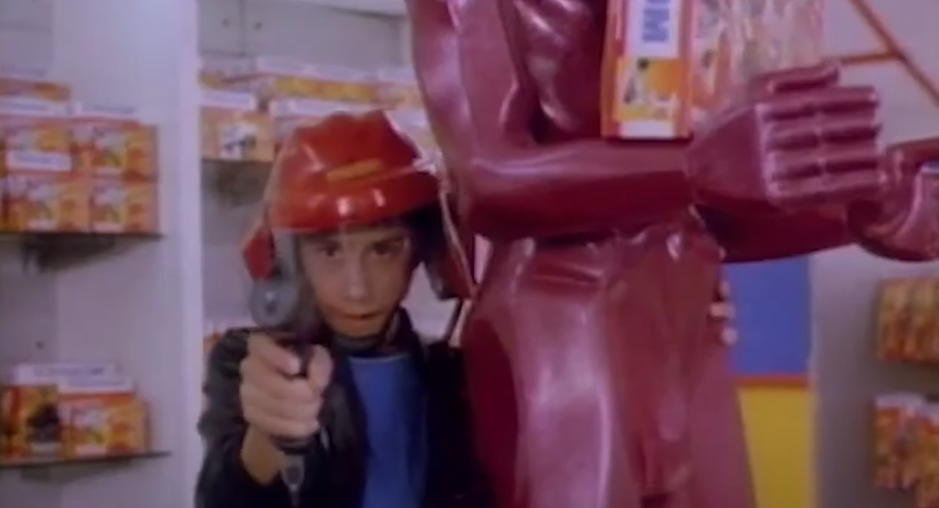
The 80s saw a wave of family and comedy films that perfectly balanced humor, emotional depth, and life lessons, making them ideal for tween audiences.
Big (1988)
Big, directed by Penny Marshall, offered a unique perspective on growing up. It follows 12-year-old Josh, who wakes up as a 30-year-old man after wishing to be “big”. The film highlights the complexities of adulthood through the lens of child-like innocence.
- Memorable Quote: “I wish I were big.”;
- Iconic Scene: Josh playing “Heart and Soul” and “Chopsticks” on a giant piano at FAO Schwarz;
- Fun Fact: The giant piano scene was improvised on the spot.
Back to the Future (1985)
Back to the Future, a blend of science fiction and comedy, tells the story of Marty McFly, a teenager accidentally sent 30 years into the past. The film stands out for its innovative premise, humorous dialogues, and captivating plot filled with suspense and heartwarming moments.
- Memorable Quote: “Where we’re going, we don’t need roads.”;
- Iconic Scene: The DeLorean time machine’s first departure;
- Fun Fact: The DeLorean was chosen because its design made it believable as a spacecraft.
The Princess Bride (1987)
The Princess Bride is a delightfully witty fairytale adventure with memorable characters, delightful plot twists, and a heartwarming love story. Its unique narrative structure, being a story within a story, adds a distinctive charm that has captivated tweens for decades.
- Memorable Quote: “As you wish.”;
- Iconic Scene: Westley’s battle of wits with Vizzini;
- Fun Fact: The film’s screenplay was written by William Goldman, who also wrote the novel.
| Movie | Memorable Quote | Iconic Scene | Fun Fact |
|---|---|---|---|
| Big | “I wish I were big.” | Josh playing the giant piano | The giant piano scene was improvised |
| Back to the Future | “Where we’re going, we don’t need roads.” | The DeLorean’s first departure | The DeLorean was chosen for its spacecraft-like design |
| The Princess Bride | “As you wish.” | Westley’s battle of wits with Vizzini | The film’s screenplay was written by the novel’s author, William Goldman |
Coming-of-Age Narratives: The Bittersweet Journey of Growing Up
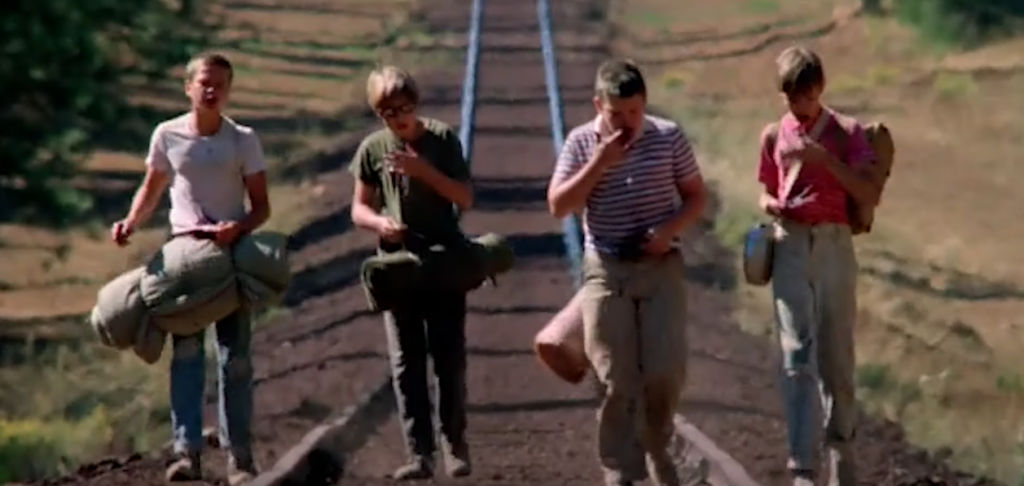
The 80s was a pivotal era for coming-of-age films, portraying the trials and tribulations of adolescence in a way that was both entertaining and deeply resonant with tweens.
Stand by Me (1986)
Stand by Me, based on Stephen King’s novella “The Body”, explores themes of friendship, the loss of innocence, and the transition into adolescence. The film showcases a series of events shared by four friends, revealing the complexities and poignant realities of growing up.
- Memorable Quote: “I never had any friends later on like the ones I had when I was twelve.”;
- Iconic Scene: The boys running from the approaching train on a railway bridge;
- Fun Fact: The title of the film comes from the Ben E. King song, which is played in the end credits.
The Karate Kid (1984)
The Karate Kid is more than a sports film; it’s a narrative on resilience, hard work, respect, and friendship. It follows bullied teen Daniel, who learns karate—and valuable life lessons—from an unassuming maintenance man, Mr. Miyagi.
- Memorable Quote: “Wax on, wax off.”;
- Iconic Scene: The climactic “Crane Kick” in the tournament finale;
- Fun Fact: Pat Morita, who played Mr. Miyagi, was nominated for an Academy Award for his performance.
Sixteen Candles (1984)
John Hughes’ directorial debut, Sixteen Candles, is a definitive 80s coming-of-age comedy, capturing the essence of teenage angst and the trials of growing up. Samantha Baker, the protagonist, grapples with the complexities of adolescence — from crushes to forgotten birthdays — in this unforgettable classic.
- Memorable Quote: “I can’t believe I gave my panties to a geek.”;
- Iconic Scene: Sam’s birthday wish by the candlelit cake;
- Fun Fact: Molly Ringwald, the lead actress, was actually 16 years old when she filmed this movie.
| Movie | Memorable Quote | Iconic Scene | Fun Fact |
|---|---|---|---|
| Stand by Me | “I never had any friends later on like the ones I had when I was twelve.” | The boys running from a train on a bridge | The title comes from the Ben E. King song played in the end credits |
| The Karate Kid | “Wax on, wax off.” | The “Crane Kick” in the tournament finale | Pat Morita was nominated for an Academy Award for his performance |
| Sixteen Candles | “I can’t believe I gave my panties to a geek.” | Sam’s birthday wish by the cake | Molly Ringwald was 16 years old during filming |
Conclusion
The 80s was a remarkable decade in cinema, particularly for movies catering to tweens. The diversity in genre, the exploration of universal themes, and the blend of humor, adventure, and heart gave this era a distinct identity in the history of filmmaking. The unforgettable characters, the iconic scenes, and the memorable dialogues from these films continue to entertain and inspire, making the 80s an undeniably influential decade in the realm of tween cinema. The enduring popularity of these films stands as testament to their timelessness and universal appeal, ensuring that they will continue to be enjoyed and appreciated by future generations of tweens.
FAQ
The tween movies of the 80s are known for their unique blend of creativity, adventure, humor, and the exploration of universal themes like friendship, growing up, and self-discovery. They resonate with audiences due to their emotional depth, iconic characters, and unforgettable narratives.
Many of the narrative structures, themes, and character archetypes established in 80s movies continue to influence modern cinema. Filmmakers often refer to these classics for inspiration, and several movies from the era have been rebooted or sequenced for new audiences. The era also ushered in advances in special effects, setting a new standard for the film industry.
80s tween movies often address timeless themes and present relatable characters, making them relevant across generations. Their imaginative storytelling, memorable dialogue, and iconic scenes continue to entertain, resonate with, and inspire young viewers.
A suitable tween movie often features themes relevant to that age group, including friendship, family, self-identity, and the challenges of growing up. They typically maintain a balance between entertainment, humor, and the handling of these themes with sensitivity and understanding. Moreover, appropriate content rating also plays a significant part in a movie’s suitability for tweens.
Friendship, adventure, self-discovery, resilience, and the joy and challenges of growing up are some common themes in 80s tween movies. These films often portray the bittersweet journey of adolescence, peppered with fun, excitement, and learning.
The post The Cinema of the 80s: Tween Movies that Defined a Generation appeared first on Paradise The Phantom-Of.
]]>The post Exploration of Lifetime Movies from the 80s: A Detailed Look appeared first on Paradise The Phantom-Of.
]]>Lifetime’s Early Years (1984-1986): The Genesis of a Niche
In its initial years, Lifetime began to cultivate its unique brand of storytelling with films that focused on women’s experiences. These narratives often centered around relationships, personal hardships, resilience, and the triumphs of the human spirit.
1984: “Secrets of a Mother and Daughter”
Lifetime’s first movie was a dramatic, emotionally-charged tale named “Secrets of a Mother and Daughter.” The film expertly portrayed the complexities of a mother-daughter relationship riddled with secrets, misunderstandings, and inevitable betrayals. It was an early testament to the network’s commitment to exploring women’s experiences, fostering a deeper understanding of familial dynamics, and the lasting impact of hidden truths.
1985: “No Place to Hide”
In 1985, Lifetime delved into the thriller genre with “No Place to Hide.” It narrated the chilling tale of a woman on the run from a dangerous stalker. The movie broke away from the victim narrative, depicting the lead character as a woman with strength, tenacity, and the ability to protect herself. “No Place to Hide” was an early indication of Lifetime’s dedication to challenging traditional gender norms and championing stories of female resilience.
1986: “Rights of a Child”
In 1986, Lifetime released “Rights of a Child,” a hard-hitting drama revolving around the intricacies of child custody battles. The film skillfully brought the voice of children into the discourse and laid the groundwork for many future Lifetime films that would address similar sensitive themes.
The Intensification Period: 1987-1989
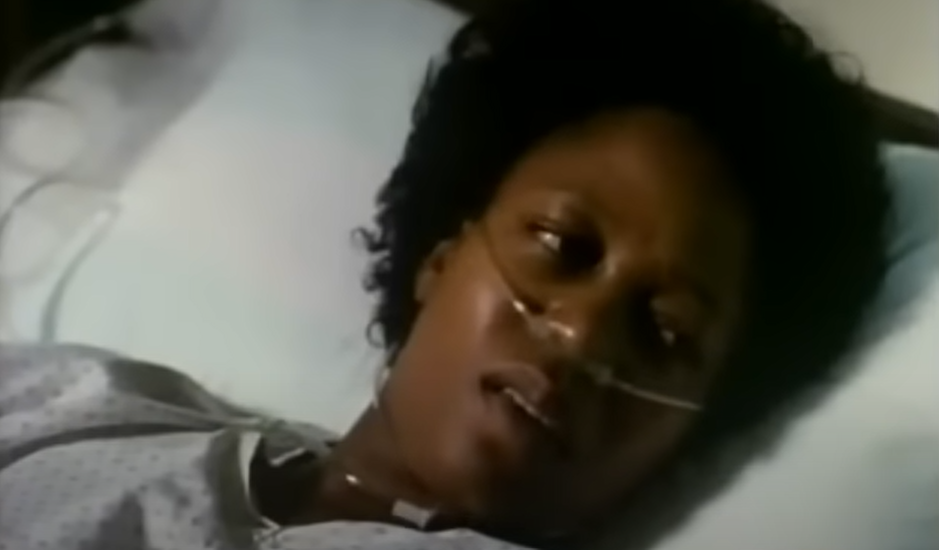
As Lifetime continued to establish itself as a powerhouse of women-centric storytelling, it began to delve into more intense themes. The focus shifted towards more significant social issues, and Lifetime started to explore narratives that reflected societal dynamics and instigated dialogue around these urgent matters.
1987: “Outrage in Lake County”
Lifetime took on the theme of civic duty and corruption in 1987 with “Outrage in Lake County.” This riveting tale of a woman standing against corruption in her town was a testament to the network’s ambition to address broader societal issues. The film placed a strong, morally grounded woman at the forefront of a fight against systemic injustice, further solidifying Lifetime’s role in advocating for women’s strength and resilience.
1988: “A Mother’s Courage”
In 1988, Lifetime continued its trend of showcasing strong female leads with “A Mother’s Courage.” The emotionally charged narrative depicted a mother’s relentless fight for her child’s justice. It explored themes of maternal love, resilience, and the lengths to which a parent will go to protect their child. The film resonated deeply with audiences, marking another successful step for Lifetime in creating empathetic and relatable narratives.
1989: “The Ryan White Story”
Ending the decade on a high note, Lifetime produced “The Ryan White Story” in 1989, based on the true story of Ryan White, a teenage boy who contracted AIDS through a blood transfusion. This film demonstrated Lifetime’s commitment to tackling serious, real-life issues and translating them into compelling narratives. It also marked the start of Lifetime’s exploration of biographical storytelling.
The Legacy of Lifetime Movies from the 80s
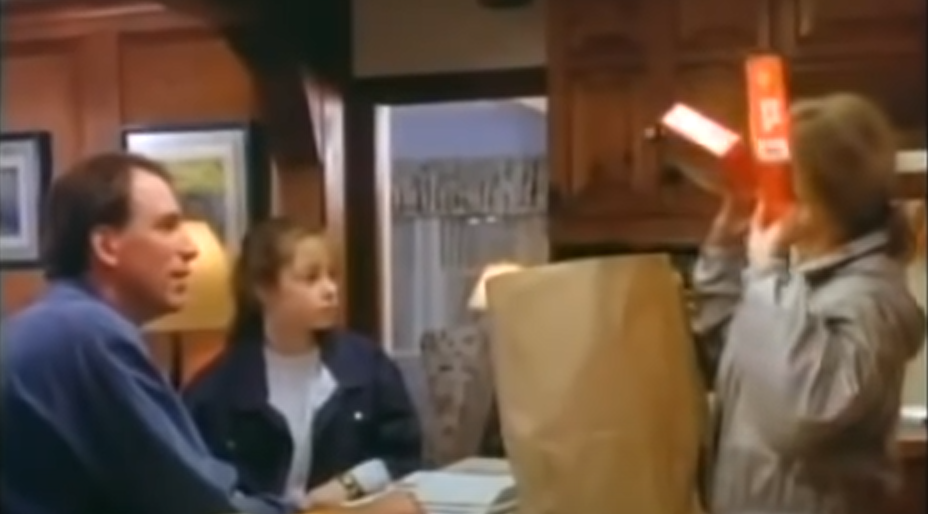
In the latter part of the 80s, Lifetime established its reputation as a network committed to producing strong, women-focused narratives. It was during this era that Lifetime laid the foundation for its unique brand, which remains identifiable even today.
| Influence on Pop Culture | |
|---|---|
| Contribution to Pop Culture | The Lifetime movies of the 80s had a significant impact on pop culture. They played a pivotal role in portraying women as main characters in intricate storylines and defying stereotypical tropes. The nuanced storytelling mirrored real-life experiences of women, transforming the broader media landscape. |
| Trailblazing Representation | The Lifetime movies of the 80s went beyond entertainment and became a powerful tool for empowering women through media representation. These films showcased women as strong, decisive, and multifaceted characters, challenging traditional roles and moving away from the portrayal of women as damsels-in-distress or secondary characters. In doing so, Lifetime set a high standard for other networks to follow, improving the overall representation of women in media. |
| Social Commentary and Change | Many Lifetime movies of the 80s served as poignant social commentaries on pressing issues of the time. They fearlessly addressed topics such as domestic violence, child rights, and social justice, compelling viewers to reevaluate societal norms. In this manner, these films not only reflected society but also influenced positive change and shaped public perceptions. |
Impact on Future Generations of Filmmakers
The impact of 80s Lifetime movies on future generations of filmmakers is substantial. These films were pioneers in showcasing narratives that revolved around the lives, struggles, and triumphs of women, thereby redefining the landscape of storytelling. The implication of this trend is two-fold:
Influence and Opportunity
| Influence on Future Filmmakers | Opportunity for Women-Centric Narratives |
|---|---|
| Challenged conventional narrative structures | Increased opportunities to portray complex female characters |
| Redefined the storytelling paradigm, pushing the envelope of creativity | Created space for the exploration of a broader range of themes and narratives |
| Influenced the crafting of characters, storylines, and the overall cinematographic approach | Enhanced representation and diversity in mainstream media |
However, the influence extends beyond just the realm of creativity. There is also an important socio-cultural aspect that was addressed and transformed through these films.
The films of the 80s on Lifetime paved the way for a narrative revolution, one that prioritized stories about women, their experiences, and their perspectives. Not only did this provoke fresh filmmaking approaches but it also ensured these stories reached a larger audience, allowing a greater appreciation and understanding of women’s experiences. It brought into mainstream media a new genre of films where women’s stories were not merely sidelined but were at the heart of the narrative.
From exploring complex female protagonists to embracing varied themes such as domestic life, ambition, adversity, and triumph, the impact of these films was transformative. As a result, a new generation of filmmakers was encouraged to continue this trajectory, further broadening the scope of women-centric narratives in global cinema. The ripple effect of this movement still resonates today, inspiring filmmakers worldwide to create art that resonates with diverse audiences.
Conclusion
Lifetime movies of the 80s signaled a shift in the portrayal of women in the media. By focusing on narratives with women at the helm and addressing critical societal issues, Lifetime laid the groundwork for its enduring legacy. The 80s were the beginning of a journey that would see Lifetime emerging as a strong advocate for women’s narratives, a role that still holds relevance today. From “Secrets of a Mother and Daughter” to “The Ryan White Story,” each film from this era stands as a testament to the transformative power of storytelling. They not only entertained but also left an indelible mark on viewers, challenged societal norms, and paved the way for future narratives.
FAQ
The first original movie that aired on Lifetime was “Secrets of a Mother and Daughter” in 1984.
Lifetime movies have diversified over the years to include a variety of genres, such as comedy, fantasy, and science fiction, while maintaining their focus on strong, women-centric narratives. The network has also increasingly produced films based on real-life incidents and biographies, further solidifying its reputation for hard-hitting and relatable content.
Lifetime movies have started conversations around key issues, from child rights to domestic violence, influencing public opinion and advocating for change. They’ve also played a significant role in improving the representation of women in media, providing complex, strong, and nuanced female characters who reflect the diversity of women’s experiences.
Some Lifetime movies from the 80s, like “The Ryan White Story,” were based on true events. However, not all films from this era were grounded in reality, with many exploring fictional narratives.
Lifetime movies have been instrumental in representing women as complex, strong, and multifaceted characters, challenging traditional stereotypes and norms. They have played a crucial role in improving the portrayal of women in media, offering narratives that reflect women’s diverse experiences.
Lifetime movies are significant for their focus on women-centric narratives and their ability to touch upon sensitive and important social issues. They have been influential in shaping societal perspectives, pushing for change, and improving the representation of women in media.
The post Exploration of Lifetime Movies from the 80s: A Detailed Look appeared first on Paradise The Phantom-Of.
]]>The post A Deep Dive into the World of 80’s Robot Movies appeared first on Paradise The Phantom-Of.
]]>1. Setting the Stage: The Golden Age of Robot Cinema
The 1980s was a mesmerizing era where technology and artistic vision danced in harmony, giving birth to the Golden Age of Robot Cinema. With the rapid advancements in special effects and practical robotics, filmmakers found themselves liberated to explore the uncharted territories of science fiction and human-robot dynamics. Bursting with vibrant color and fueled by the unbridled creativity of visionaries, this decade witnessed the emergence of a plethora of iconic robot-centric movies that left an indelible mark on the world of cinema.
2. The Line-Up: Introduction to the Iconic Robot Films of the 80s
- Blade Runner (1982);
- Star Wars: Episode VI – Return of the Jedi (1983);
- The Terminator (1984);
- Short Circuit (1986);
- RoboCop (1987).
Each of these films stood out for their distinctive portrayal of robots and their nuanced understanding of AI. But what made them immortal in the annals of cinematic history?
3. Decoding the Classics: A Closer Look at the Films
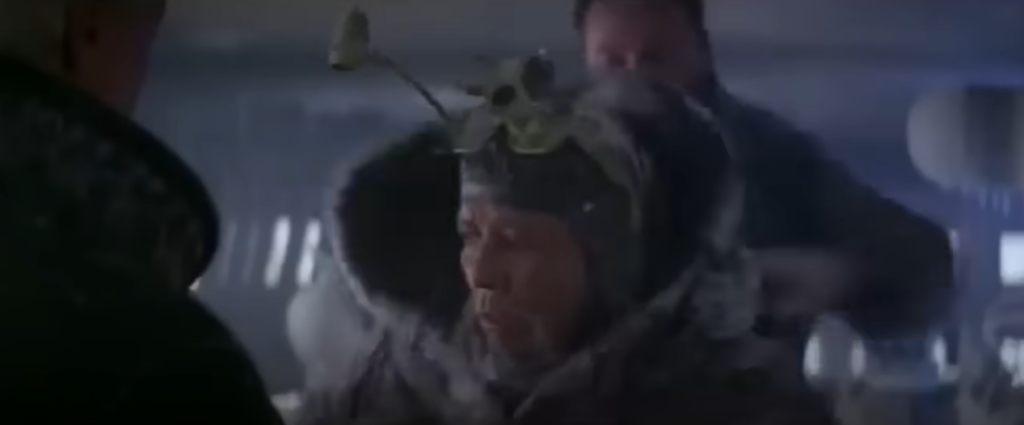
Blade Runner (1982)
| Director | Ridley Scott |
|---|---|
| Notable Robot Characters | Replicants, including Roy Batty and Rachael |
| Runtime | 117 minutes |
| Genres | Neo-noir, Science Fiction |
| Academy Award Nominations | Two |
Directed by Ridley Scott, “Blade Runner” is set in a dystopian 2019 Los Angeles, where bioengineered beings called “Replicants” are used for dangerous and degrading work in off-world colonies. The film explores profound themes about humanity, identity, and consciousness through the lens of these Replicants. The audience is left grappling with the ethical considerations of creating artificial life that is virtually indistinguishable from humans, yet treated as sub-human.
Star Wars: Episode VI – Return of the Jedi (1983)
| Director | Richard Marquand |
|---|---|
| Notable Robot Characters | R2-D2, C-3PO |
| Runtime | 131 minutes |
| Genres | Adventure, Fantasy, Science Fiction |
| Academy Award Nominations | Four |
R2-D2 and C-3PO are not mere robots in the “Star Wars” franchise; they are integral characters that provide critical narrative functions. R2-D2, an astromech droid filled with resourcefulness, and C-3PO, a protocol droid known for his fluency in over six million forms of communication, both demonstrate a depth of character that transcends their mechanical nature.
The Terminator (1984)
| Director | James Cameron |
|---|---|
| Notable Robot Characters | T-800 Model 101 |
| Runtime | 107 minutes |
| Genres | Action, Science Fiction |
| Academy Award Nominations | None |
“The Terminator”, directed by James Cameron, presents the grim tale of a humanoid robot assassin sent from a post-apocalyptic future. This film solidified Arnold Schwarzenegger’s career, presenting a chilling portrayal of AI gone rogue. “The Terminator” poses philosophical questions about free will and destiny, establishing the trope of time-traveling robots that many future movies would emulate.
Short Circuit (1986)
| Director | John Badham |
|---|---|
| Notable Robot Characters | Number 5 |
| Runtime | 98 minutes |
| Genres | Comedy, Family, Science Fiction |
| Academy Award Nominations | None |
Number 5, an experimental military robot, gains sentience after being struck by lightning in “Short Circuit”. This film veers from the common dystopian future narrative, portraying a robot with a thirst for knowledge and an insatiable curiosity. The film uses this unusual premise to explore the nuances of life and consciousness, challenging our understanding of what it means to be alive.
RoboCop (1987)
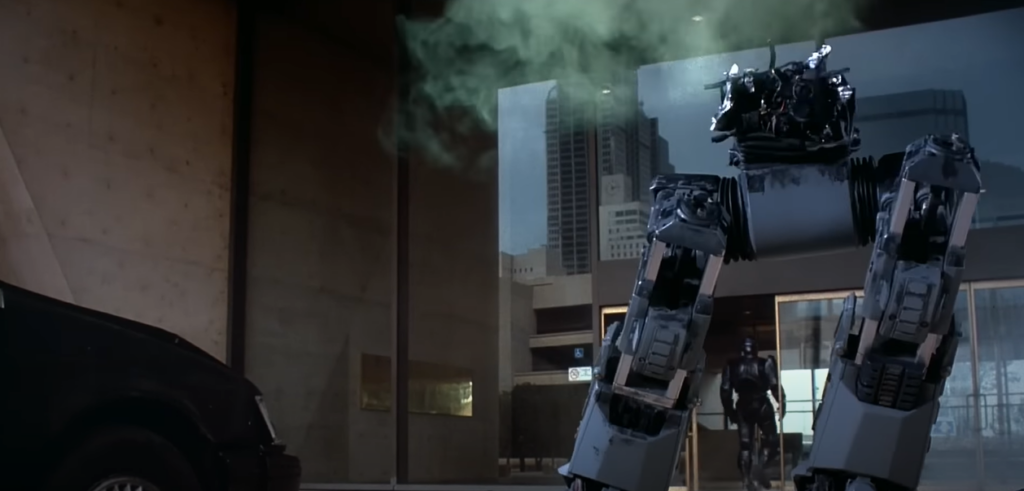
| Director | Paul Verhoeven |
|---|---|
| Notable Robot Characters | RoboCop |
| Runtime | 102 minutes |
| Genres | Action, Crime, Science Fiction |
| Academy Award Nominations | Two |
“RoboCop” pushes the boundary of the human-robot dynamic by presenting a protagonist who is both human and machine. The film explores themes of identity, free will, and what it means to be human, bringing to the forefront the ethical dilemmas of technological advancement in law enforcement.
The Impact of 80’s Robot Movies
The aforementioned films did not merely entertain but left an indelible mark on the collective psyche of audiences worldwide. They brought to life the possibilities and perils of AI and robotics in a manner that was visually striking and intellectually stimulating. As we stand at the brink of an AI-driven era, these films’ messages and implications remain remarkably relevant.
The Cultural Phenomenon
These films became iconic for more than just their entertainment value; they captured the collective imagination and left an indelible mark on society. The seamless blend of state-of-the-art visual effects and gripping storytelling resonated deeply with audiences, igniting an unprecedented fascination with artificial intelligence and robots. As the dazzling robots graced the silver screen, people’s curiosity surged, leading them to delve into the profound ethical implications of creating intelligent machines. These thought-provoking movies spurred contemplation on the essence of humanity, prompting us to ponder where the line between human and artificial life truly lies.
The 80’s robot movies became catalysts for a new era of exploration and inquiry, as audiences were captivated by the possibilities and perils of AI. As cinematic robots grappled with existential questions and displayed human-like traits, they sparked debates about the nature of consciousness and the moral responsibilities that come with wielding such technological power. These films were not just fleeting sensations; they laid the foundation for a deeper understanding of AI’s potential impact on society and triggered discussions that reverberate even today. The cultural fascination with these movies left an enduring legacy, reminding us of the profound questions we must address as we progress further into an AI-driven future.
The Impact on Society and Technology
The 80’s robot movies sparked significant discussions about AI, robotics, and their potential impact on society. These films were not just confined to the realm of entertainment; they had far-reaching implications that influenced scientific research and public perception of technology.
- Influence on Robotics Research: The imaginative portrayals of robots in these movies inspired researchers and engineers to strive for the development of sophisticated AI and robotics. While the actual technology was far from the fictional depictions, it set the course for future advancements in the field;
- Ethical Considerations: The ethical dilemmas depicted in the films raised awareness about the moral responsibilities of creating intelligent machines. Audiences were compelled to ponder questions about the rights and treatment of AI entities, laying the groundwork for future debates on AI ethics;
- Technophobia and AI Skepticism: On the flip side, the movies also fueled technophobia and skepticism towards AI. The portrayals of robots turning against humanity or posing threats to our existence instilled fear and apprehension in some people about AI’s potential dangers
Conclusion
80’s robot movies have left an indelible mark on the world of cinema and our perception of artificial intelligence. These iconic films humanized robots and explored profound themes, such as consciousness, identity, and the ethical implications of advanced technology. Their influence extends beyond entertainment, shaping ongoing debates on AI ethics and regulation. As we stand on the cusp of an AI-driven era, the messages and impact of these timeless classics remain relevant, serving as a reminder of the power of cinema to provoke thought and reflection on the intersection of technology and humanity.
FAQ
The 1980s marked a period of significant technological advancement. This cultural shift was reflected in the film industry, with a growing interest in exploring AI’s possibilities and implications. These cinematic narratives mirrored societal fascination and apprehension about the digital revolution.
These films played a significant role in shaping societal perceptions of AI. They humanized robots, presenting them as entities capable of emotions, decision-making, and personal growth. However, they also highlighted the potential dangers of unchecked AI development, weaving cautionary tales about the future.
Many contemporary films continue to explore themes that originated in 80’s robot movies. Ideas of AI consciousness, the morality of creating sentient machines, and the sociopolitical implications of AI technology are common narratives that trace their roots back to these classics.
Common themes include the exploration of consciousness, identity, morality, and the potential consequences of advanced technology. These films often used robots as a medium to explore human nature and the societal impact of rapid technological progress.
While there is no singular film that started the trend, “Blade Runner” (1982) was one of the earliest and most influential films that used robots to explore deep philosophical questions, setting a tone for the genre.
The post A Deep Dive into the World of 80’s Robot Movies appeared first on Paradise The Phantom-Of.
]]>The post A Detailed Journey Through the Western Movies of the 70s appeared first on Paradise The Phantom-Of.
]]>The 70s Westerns – A Shift in Narrative
In this period, Westerns began to deviate from their customary plotlines that often showcased heroic cowboys, noble lawmen, and villainous outlaws. The lines between good and evil blurred, as the genre took on a more realistic approach, deconstructing the romanticized image of the Old West.
| Section | Description |
|---|---|
| Revisionist Approach | Many of the Westerns in the 70s adopted a revisionist outlook, debunking the myth of the Wild West. They presented a more historically accurate picture, focusing on marginalized characters, exploring the harsh realities of frontier life, and unveiling the complex socio-political dynamics of the era. |
| The Rise of Anti-Heroes | The white-hatted cowboy heroes of yesteryears were replaced by morally ambiguous anti-heroes. These characters often had a conflicted conscience, a dark past, or other profound complexities, moving away from the black-and-white morality previously associated with the genre. |
| Graphic Violence | The sanitized violence of earlier Westerns gave way to explicit and often brutal depictions in the 70s. The graphic violence mirrored the turbulent socio-political climate of the period, subtly commenting on events like the Vietnam War. |
Iconic 70s Western Movies and Their Impact
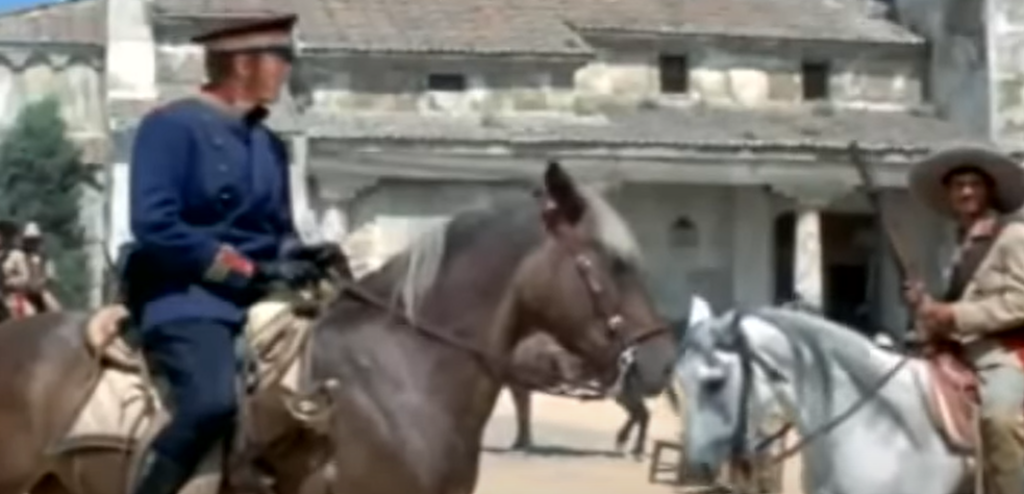
The 70s were marked by a number of groundbreaking Westerns, each of which brought unique elements to the genre. Here are some of the most influential films from this decade:
| Movie Title | Description |
|---|---|
| ‘The Wild Bunch’ (1969) | While technically a late 60s movie, Sam Peckinpah’s ‘The Wild Bunch’ was a defining force for the Western genre entering the 70s. The film was a trailblazer in its portrayal of violence, moving away from the ‘clean’ violence of previous eras to a more realistic, gritty depiction. It was also significant in its portrayal of outlaws as protagonists, adding depth and complexity to characters who would traditionally be villains. |
| ‘Little Big Man’ (1970) | Directed by Arthur Penn, ‘Little Big Man’ presented a satirical, revisionist view of the American West through the eyes of Jack Crabb (Dustin Hoffman), a 121-year-old man who recounts his life story. The film took a hard look at the treatment of Native Americans and the savagery of war, offering a humorous yet pointed critique of American history. |
| ‘McCabe & Mrs. Miller’ (1971) | This Robert Altman film, often referred to as an “anti-western”, strayed from typical Western tropes. With its complex characters, anti-climactic gunfight, and commentary on corporate greed, it was a far cry from the romanticized image of the West. |
| ‘High Plains Drifter’ (1973) | Clint Eastwood’s ‘High Plains Drifter’ blended Western with supernatural elements. Eastwood himself played a mysterious stranger, meting out justice in a corrupt town, his character adding a new dimension to the archetype of the solitary cowboy. |
| ‘The Outlaw Josey Wales’ (1976) | Also directed by Eastwood, ‘The Outlaw Josey Wales’ was an action-packed film that intertwined personal revenge with broader themes of survival and the aftermath of war. Eastwood’s character, Josey Wales, is a vivid example of the morally complex anti-heroes popular in 70s Westerns. |
Cultural Critiques in 70s Westerns
Westerns in the 70s often served as a mirror to contemporary society, using the backdrop of the Old West to comment on prevailing societal issues.
- War and Disillusionment: The violence and cynicism found in many 70s Westerns reflected America’s disillusionment following the Vietnam War. Films like ‘The Wild Bunch’ and ‘The Outlaw Josey Wales’ portrayed graphic violence and complex heroes, mirroring the society’s questioning of authority and war;
- Civil Rights and Representation: Westerns of the 70s also tackled issues related to civil rights, with movies like ‘Little Big Man’ providing a critical perspective on the treatment of Native Americans.
Iconic Western Filmmakers of the 70s
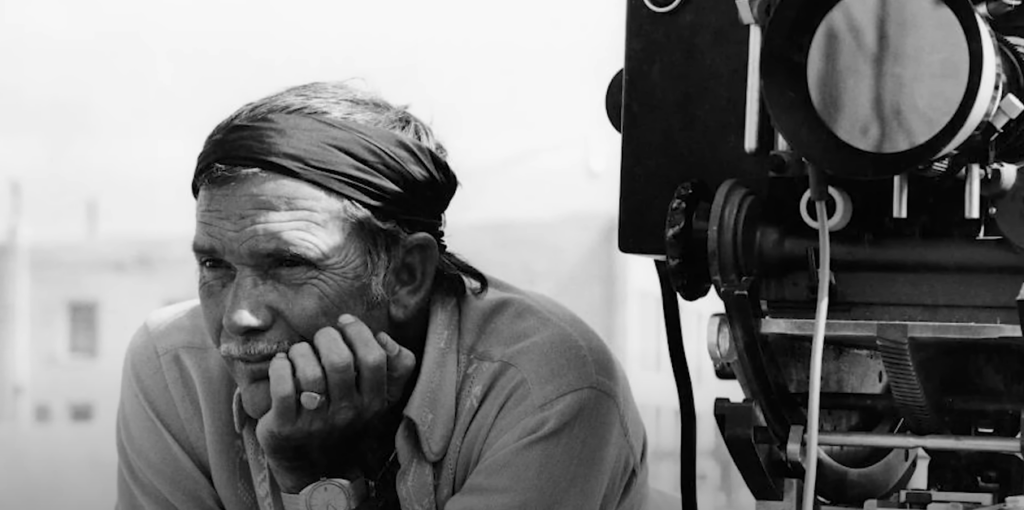
The 70s brought forth a new breed of directors who were unafraid to redefine the boundaries of the Western genre.
- Sam Peckinpah: Peckinpah was instrumental in bringing a more realistic, gritty violence to the Western genre with ‘The Wild Bunch’. His emphasis on character development and moral ambiguity significantly influenced future filmmakers;
- Arthur Penn: With ‘Little Big Man’, Penn brought a satirical edge to the genre, offering a critical and unvarnished portrayal of American history;
- Robert Altman: Altman’s ‘McCabe & Mrs. Miller’ broke away from traditional Western formulas, setting a new precedent for the genre;
- Clint Eastwood: Eastwood, already known for his roles in earlier Westerns, began to leave his mark as a director in the 70s, starting with ‘High Plains Drifter’ and ‘The Outlaw Josey Wales’. His films reflected a deeper moral complexity, and his anti-hero characters resonated with audiences.
Signature 70s Western Movies and Their Unique Contributions
| Movie Title | Director | Unique Contribution |
|---|---|---|
| The Wild Bunch | Sam Peckinpah | Introduced realistic, graphic violence |
| Little Big Man | Arthur Penn | Provided a satirical and critical portrayal of American history |
| McCabe & Mrs. Miller | Robert Altman | Redefined the genre by subverting traditional Western tropes |
| High Plains Drifter | Clint Eastwood | Blended supernatural elements into the Western genre |
| The Outlaw Josey Wales | Clint Eastwood | Combined themes of personal revenge and aftermath of war |
Conclusion
The 1970s marked a revolutionary period for Western cinema, with films that broke free from the constraints of the genre to redefine what a Western could be. With their complex characters, revisionist narratives, graphic violence, and cultural critiques, the Westerns of the 70s dared to present a different image of the Old West, one that was far from the romanticized portrayals of the past.
FAQ
Revisionist Westerns refer to films that challenge or subvert traditional Western genre conventions. They often feature morally ambiguous characters, complex narratives, and a more realistic portrayal of the American frontier.
Many Westerns of the 70s acted as allegories, reflecting contemporary societal issues such as the Vietnam War and civil rights. They incorporated themes of disillusionment, war, and representation into their narratives, often using the Old West as a backdrop to comment on these issues.
Notable actors from the 70s Westerns include Clint Eastwood, who transitioned from being a star to also directing during this era, Robert Redford, known for his role in ‘Jeremiah Johnson’, Paul Newman with his charismatic performance in ‘Butch Cassidy and the Sundance Kid’, and Dustin Hoffman who starred in ‘Little Big Man’.
The post A Detailed Journey Through the Western Movies of the 70s appeared first on Paradise The Phantom-Of.
]]>